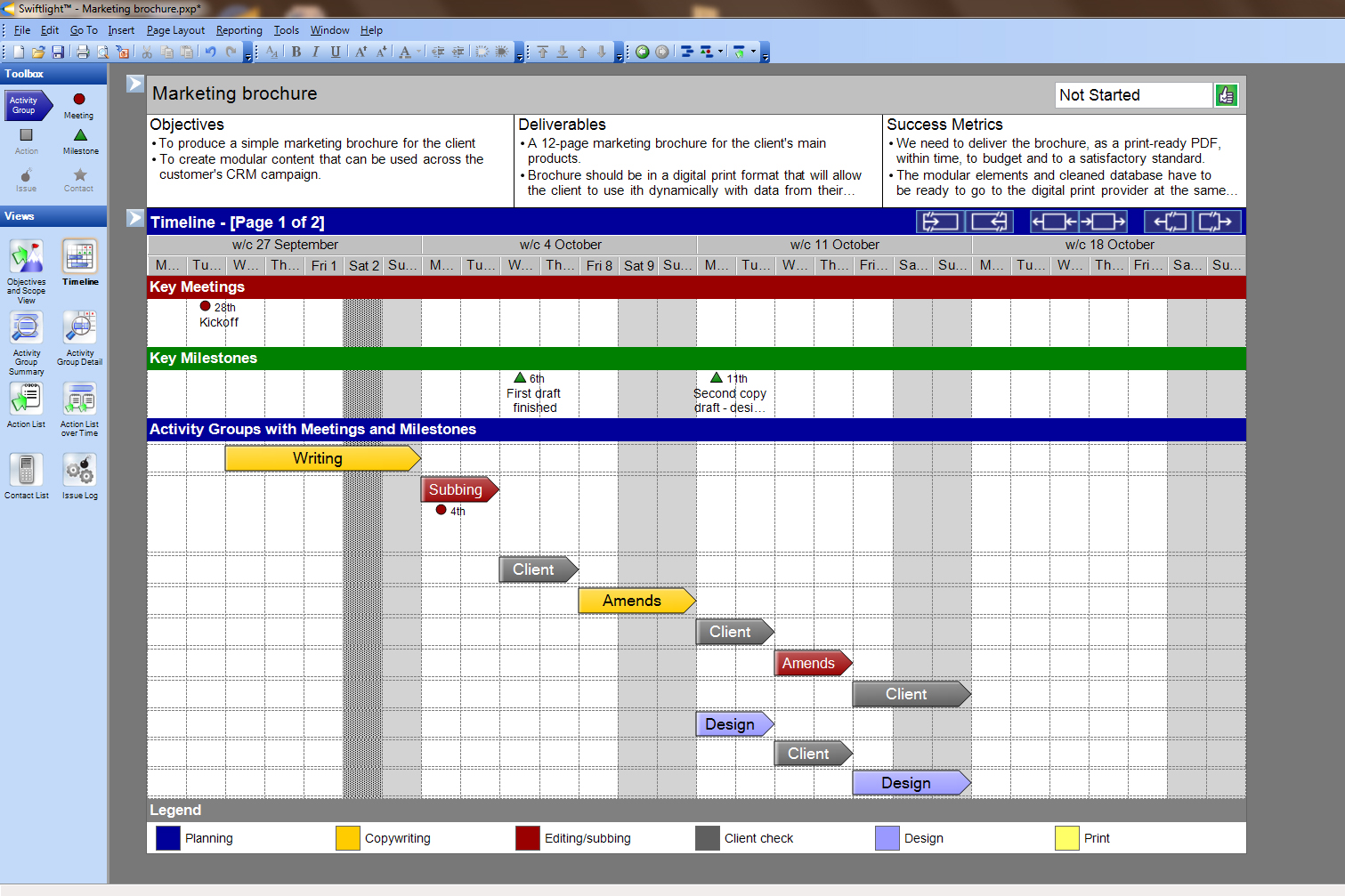Cloud computing implications for project management
All types of cloud create special challenges for a project manager, meaning they can't guarantee service levels

The public cloud is the worst environment for a project manager (PM). You subscribe to the service you don't own, you access via the internet, you've got no control and no title over the cloud system and pretty insecure ownership of the data you upload. Talk about putting your assets on the line!
A good PM is always a bit paranoid because we like to know everything and control it. That's the only way you can guarantee to hit the targets and deliver the service. So project management, in these circumstances, is a nightmare. If service level agreements (SLAs) are involved, you will need to devote a major part of your budget to a good lawyer, as did many of the pioneers of outsourcing and application services.
While CIOs might understand the dangers of the public cloud ‘black box’, the line-of-business executives and managers don't. Your PM discipline is the barrier that protects the sanctity of the SLAs involved in a cloud implementation. But the cloud creates all kinds of pressures that threaten to crash through that barrier.
Here are some of them:
1. Compression of time
People expect enterprise-ready applications in hours now.
Most public cloud offerings have deceptively easy looking configuration management options through a so-called control panel that is nothing of the sort. This sends the business manager wild with anticipation and drives up expectation. Which puts pressure the project manager to speed up the completion. Succumbing to this pressure can be fatal, as you are the one who will get it in the neck later. All those people who thumped on the table demanding instant gratification will suddenly change their tune when service levels aren't met later. They will argue that you should have withstood the pressure on you – even when it was them was exerting it.
Sign up today and you will receive a free copy of our Future Focus 2025 report - the leading guidance on AI, cybersecurity and other IT challenges as per 700+ senior executives
As a PM, you will argue that the necessary stages - requirements gathering and analysis - are the foundation on which SLAs will be built. They will look at the deceptively easy management tools, appoint themselves as instant IT experts and conclude that you are an IT jobsworth.
Comprehensive due diligence must be carried out before production scales up. In the rush to market, this is often ignored during cloud projects.
2. The ‘viral cloud’ phenomenon
A viral cloud is a cloud installation that starts off local and goes 'out there'. A bit like a YouTube sensation – the type that's generally out of your control and you end up losing your job.
You start the project with all your parameters mapped out. You have an initial user pool and you are omnipotent (like all good project managers should be) in your approval of workflows, access documents, process information and so on. But then, as so often happens, you can become a victim of your own success. Additional subscriptions are bought and it's often outside your consciousness and so beyond your control. You are literally sleep walking into service level problems.
The cloud's accessibility makes is that it makes it much easier for subscriptions to ramp up. Unless you baton down all the hatches and lock every window to outside interference.
The low barrier to entry could mask the potential for additional cost, unmitigated risk and breach of minimum governance standards.
One university fell victim to an unauthorised cloud deployment that was bought using one of the Faculty’s discretionary budgets. The PM only discovered this when data integrity issues arose over the student enrolments database.
3. Managing project boundaries
It's not just the users and the subscriptions that threaten to get out of control, the project manager in the cloud has another lively set of variables that could affect his ability to meet service level targets.
The cloud has provided the ideal environment for development APIs. These interfaces are everywhere and there are loads of variations. So not only are there thousands of vendor apps, there are swarms of satellite apps written by third parties that have easy access. These are of questionable quality. Not only are the barbarians at the gate, but they've got a key.
The Salesforce App Exchange, Android Market and the Apple iStore are the homelands for these agents of doom. They all have cute names but a more honest description would be Project Hijacker, SLA-killer and Damage Wreaker. These apps can extend the boundary of projects in an uncontrolled manner. The PM needs to decide what project governance controls they can impose to mitigate these adverse consequences.
4. Challenges for standard methodologies such as PRINCE2 and ITIL
Prince2: I've been there, done it and got the certificate. Like Pilates it gives your body of work a good core strength but it doesn't provide the flair a PM needs.
The cloud can even undermine the comprehensive large scale project methodologies of Prince2. Why? Because Prince2 works best for the largest of enterprise IT projects. Granted, key elements of it are universally applicable to all projects but the volatile nature of cloud projects, which seem to be unstructured working cultures - implement first and modify as you go – aren't consistent. You can still be a cloud innovator, but you must keep the disciplines you learnt when all your computing resources were kept in house.
5. Use of cloud technologies by project managers
One of the clinching business arguments for cloud computing is universal access. Lowering the barrier to entry for applications - using handheld applications on tablets and smart phones – lowers your costs. This even applies to Project management software, which you can use for the life of a project, rather than take out a mortgage and buy the package.
As a project manager on geographically distributed projects, this can be a tremendous boon. Whenever information sharing and regular status updates of project activities are important to mobile project stakeholders, the cloud is a revelation.
But there are still nagging questions that need to be addressed. Can you scale down at the end of the project? Can you find a home for your project management data that's now being stored in the cloud, so you can use it later if needed. If you leave the cloud what happens to the data and can you still make use of it?
-
 TPUs: Google's home advantage
TPUs: Google's home advantageITPro Podcast How does TPU v7 stack up against Nvidia's latest chips – and can Google scale AI using only its own supply?
-
 Microsoft Excel is still alive and kicking at 40
Microsoft Excel is still alive and kicking at 40News A recent survey found Gen Z and Millennial finance professionals have a strong “emotional attachment” to Microsoft Excel
-
 Twilio appoints Google Hangouts innovator as chief product officer
Twilio appoints Google Hangouts innovator as chief product officerNews Chee Chew will lead the company's relationship with developers, helping them create customer experiences
-
 What is ISO 9001?
What is ISO 9001?In-depth We explain the principles of ISO 9001 and who should consider getting certified
-
 Getting buy-in on agile
Getting buy-in on agileIn-depth How to successfully implement agile development
-
 Gartner: Extreme transformation is on the horizon for some leaders
Gartner: Extreme transformation is on the horizon for some leadersNews PPM leaders must prepare for extreme transformation, according to the analyst firm
-
 IT automation no threat to employee productivity, research shows
IT automation no threat to employee productivity, research showsNews A new report from the Economic Intelligence Unit shines a light on management automation fears.
-
 Google urges businesses to get mobile
Google urges businesses to get mobileNews The launch of Get Mo encourages companies to make their websites mobile and attract more customers to their brands.
-
 Swiftlight review
Swiftlight reviewReviews Swiftlight's eponymous project management software is inexpensive and is aimed at novices. Karl Wright takes a closer look to find out whether it really is suitable for inexperienced users.
-
 Web 2.0 to change business?
Web 2.0 to change business?News The speed and flexibility of so-called Web 2.0 tech is forcing enterprises to evolve, according to a new report.